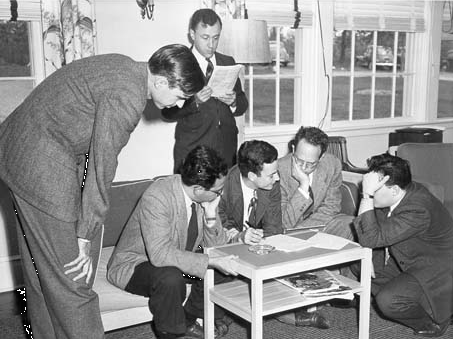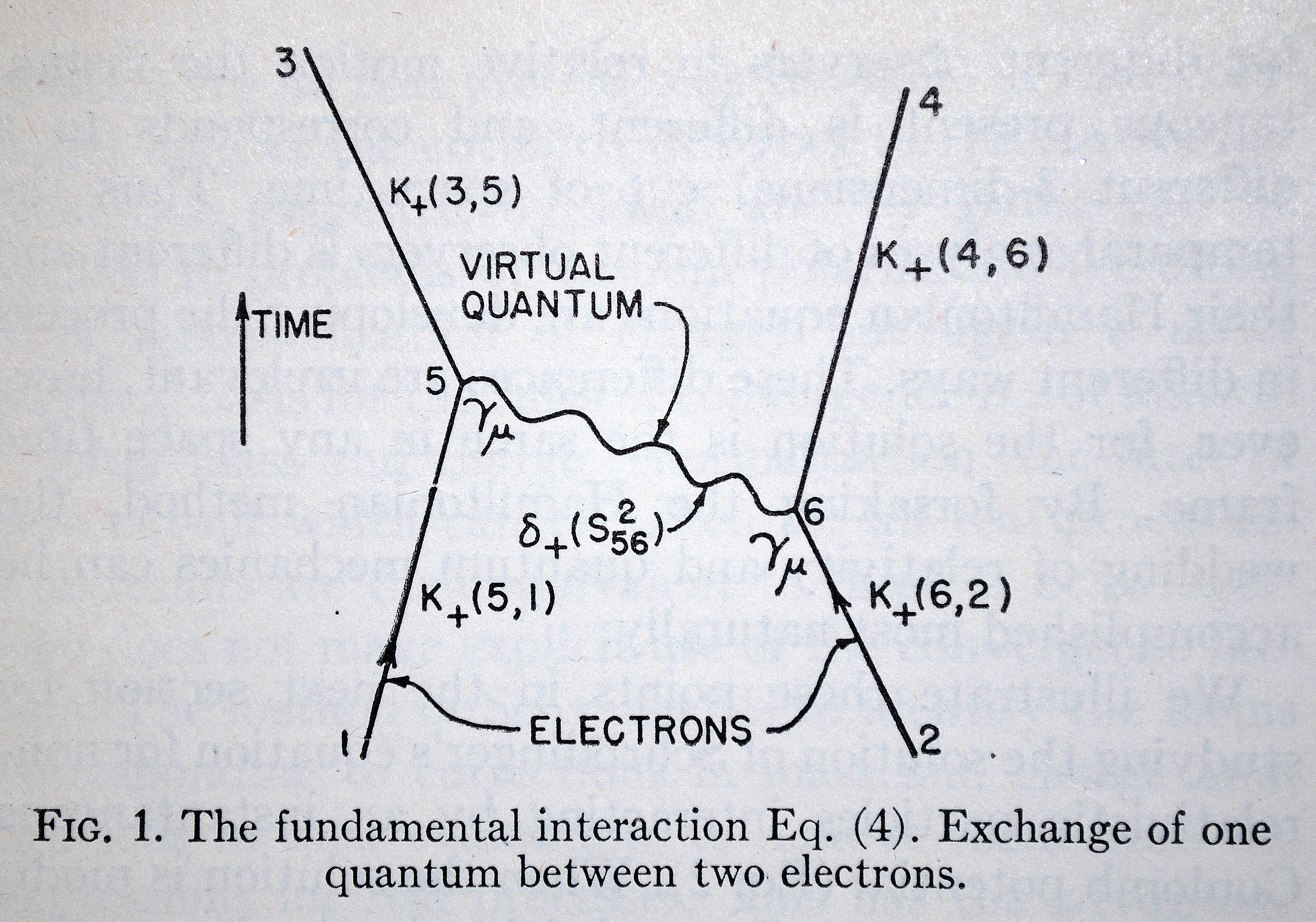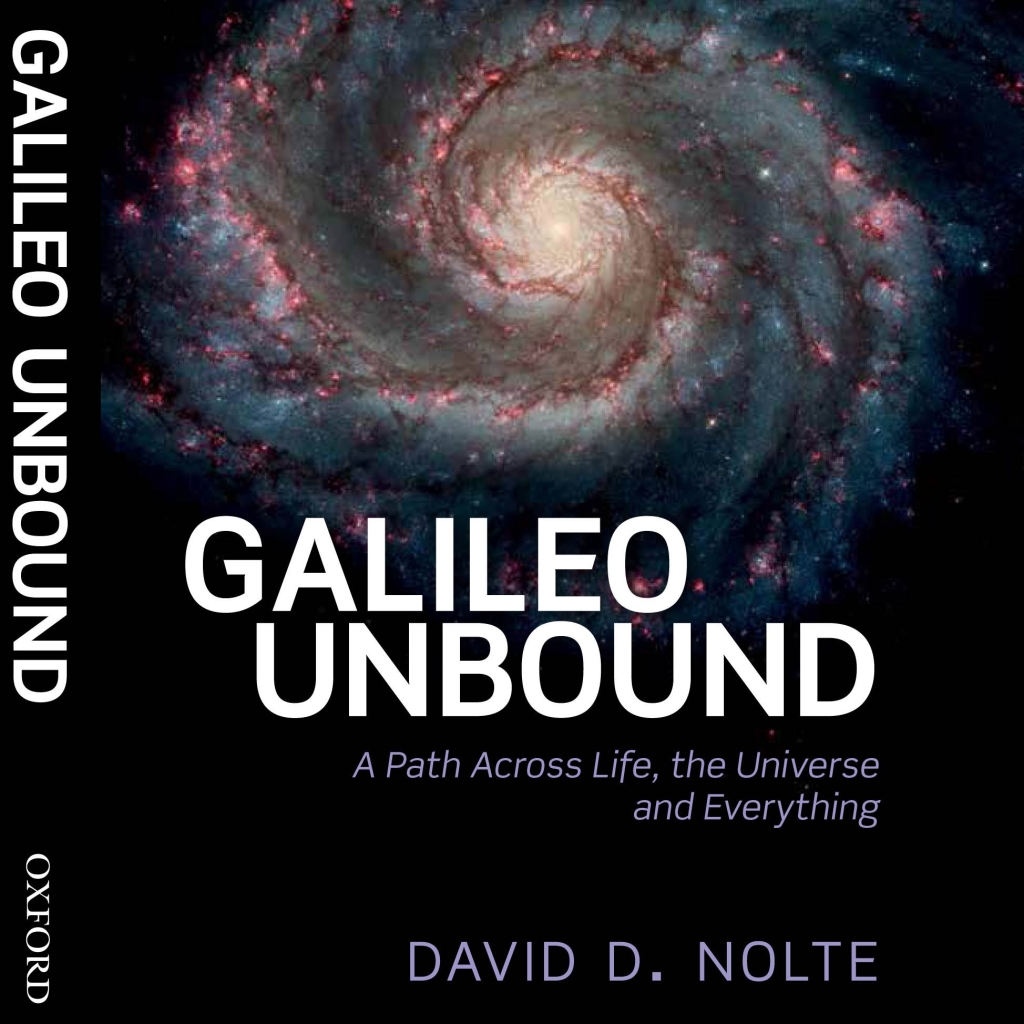In the years immediately following the Japanese surrender at the end of WWII, before the horror and paranoia of global nuclear war had time to sink into the psyche of the nation, atomic scientists were the rock stars of their times. Not only had they helped end the war with a decisive stroke, they were also the geniuses who were going to lead the US and the World into a bright new future of possibilities. To help kick off the new era, the powers in Washington proposed to hold a US meeting modeled on the European Solvay Congresses. The invitees would be a select group of the leading atomic physicists: invitation only! The conference was held at the Rams Head Inn on Shelter Island, at the far end of Long Island, New York in June of 1947. The two dozen scientists arrived in a motorcade with police escort and national press coverage. Richard Feynman was one of the select invitees, although he had done little fundamental work beyond his doctoral thesis with Wheeler. This would be his first real chance to expound on his path integral formulation of quantum mechanics. It was also his first conference where he was with all the big guns. Oppenheimer and Bethe were there as well as Wheeler and Kramers, von Neumann and Pauling. It was an august crowd and auspicious occasion.
Shelter Island and the Foundations of Quantum Mechanics
The topic that had been selected for the conference was Foundations of Quantum Mechanics, which at that time meant quantum electrodynamics, known as QED, a theory that was at the forefront of theoretical physics, but mired in theoretical difficulties. Specifically, it was waist deep in infinities that cropped up in calculations that went beyond the lowest order. The theorists could do back-of-the-envelope calculations with ease and arrive quickly at rough numbers that closely matched experiment, but as soon as they tried to be more accurate, results diverged, mainly because of the self-energy of the electron, which was the problem that Wheeler and Feynman had started on at the beginning of his doctoral studies [1]. As long as experiments had only limited resolution, the calculations were often good enough. But at the Shelter Island conference, Willis Lamb, a theorist-turned-experimentalist from Columbia University, announced the highest resolution atomic spectroscopy of atomic hydrogen ever attained, and there was a deep surprise in the experimental results.

Hydrogen, of course, is the simplest of all atoms. This was the atom that launched Bohr’s model, inspired Heisenberg’s matrix mechanics and proved Schrödinger’s wave mechanics. Deviations from the classical Bohr levels, measured experimentally, were the testing grounds for Dirac’s relativistic quantum theory that had enjoyed unparalleled success until Lamb’s presentation at Shelter Island. Lamb showed there was an exceedingly small energy splitting of about 200 parts in a billion that amounted to a wavelength of 28 cm in the microwave region of the electromagnetic spectrum. This splitting was not predicted, nor could it be described, by the formerly successful relativistic Dirac theory of the electron.
The audience was abuzz with excitement. Here was a very accurate measurement that stood ready for the theorists to test their theories on. In the discussions, Oppenheimer guessed that the splitting was likely caused by electromagnetic interactions related to the self energy of the electron. Victor Weisskopf of MIT with Julian Schwinger of Harvard suggested that, although the total energy calculations of each level might be infinite, the difference in energy DE should be finite. After all, in spectroscopy it is only the energy difference that is measured experimentally. Absolute energies are not accessible directly to experiment. The trick was how to subtract one infinity from another in a consistent way to get a finite answer. Many of the discussions in the hallways, as well as many of the presentations, revolved around this question. For instance, Kramers suggested that there should be two masses in the electron theory—one is the observed electron mass seen in experiments, and the second is a type of internal or bare mass of the electron to be used in perturbation calculations.
On the train ride up state after the Shelter Island Conference, Hans Bethe took out his pen and a sheaf of paper and started scribbling down ideas about how to use mass renormalization, subtracting infinity from infinity in a precise and consistent way to get finite answers in the QED calculations. He made surprising progress, and by the time the train pulled into the station at Schenectady he had achieved a finite calculation in reasonable agreement with Lamb’s shift. Oppenheimer had been right that the Lamb shift was electromagnetic in origin, and the suggestion by Weisskopf and Schwinger that the energy difference would be finite was indeed the correct approach. Bethe was thrilled with his own progress and quickly wrote up a paper draft and sent a copy in letters to Oppenheimer and Weisskopf [2]. Oppenheimer’s reply was gracious, but Weisskopf initially bristled because he also had tried the calculations after the conference, but had failed where Bethe had succeeded. On the other hand, both pointed out to Bethe that his calculation was non-relativistic, and that a relativistic calculation was still needed.
When Bethe returned to Cornell, he told Feynman about the success of his calculations but that a relativistic version was still missing. Feynman told him on the spot that he knew how to do it and that he would have it the next day. Feynman’s optimism was based on the new approach to relativistic quantum electrodynamics that he had been developing with the aid of his newly-invented “Feynman Diagrams”. Despite his optimism, he hit a snag that evening as he tried to calculate the self-energy of the electron. When he met with Bethe the next day, they both tried to to reconcile the calculations with Feynman’s new approach, but they failed to find a path through the calculations that made sense. Somewhat miffed, because he knew that his approach should work, Feynman got down to work in a way that he had usually avoided (he had always liked finding the “easy” path through tough problems). Over several intense months, he began to see how it all would work out.
At the same time that Feynman was making progress on his work, word arrived at Cornell of progress being made by Julian Schwinger at Harvard. Schwinger was a mathematical prodigy like Feynman, and also like Feynman had grown up in New York city, but they came from very different neighborhoods and had very different styles. Schwinger was a formalist who pursued everything with precision and mathematical rigor. He lectured calmly without notes in flawless presentations. Feynman, on the other hand, did his physics by feel. He made intuitive guesses and checked afterwards if they were right, testing ideas through trial and error. His lectures ranged widely, with great energy, without structure, following wherever the ideas might lead. This difference in approach and style between Schwinger and Feynman would have embarrassing consequences at the upcoming sequel to the Shelter Island conference that was to be held in late March 1948 at a resort in the Pocono Mountains in Pennsylvania.
The Conference in the Poconos
The Pocono conference was poised to be for the theorists Schwinger and Feynman what the Shelter Island had been for the experimentalists Rabi and Lamb—a chance to drop bombshells. There was a palpable buzz leading up to the conference with advance word coming from Schwinger about his successful calculation of the g-factor of the electron and the Lamb shift. In addition to the attendees who had been at Shelter Island, the Pocono conference was attended by Bohr and Dirac—two of the giants who had invented quantum mechanics. Schwinger began his presentation first. He had developed a rigorous mathematical method to remove the infinities from QED, enabling him to make detailed calculations of the QED corrections—a significant achievement—but the method was terribly complicated and tedious. His presentation went on for many hours in his carefully crafted style, without notes, delivered like a speech. Even so, the audience grew restless, and whenever Schwinger tried to justify his work on physical grounds, Bohr would speak up, and arguments among the attendees would ensue, after which Schwinger would say that all would become clear at the end. Finally, he came to the end, where only Fermi and Bethe had followed him. The rest of the audience was in a daze.
Feynman was nervous. It had seemed to him that Schwinger’s talk had gone badly, despite Schwinger’s careful preparation. Furthermore, the audience was spent and not in a mood to hear anything challenging. Bethe suggested that if Feynman stuck to the math instead of the physics, then the audience might not interrupt so much. So Feynman restructured his talk in the short break before he was to begin. Unfortunately, Feynman’s strength was in physical intuition, and although he was no slouch at math, he was guided by visualization and by trial and error. Many of the steps in his method worked (he knew this because they gave the correct answers and because he could “feel” they were correct), but he did not have all the mathematical justifications. What he did have was a completely new way of thinking about quantum electromagnetic interactions and a new way of making calculations that were far simpler and faster than Schwinger’s. The challenge was that he relied on space-time graphs in which “unphysical” things were allowed to occur, and in fact were required to occur, as part of the sum over many histories of his path integrals. For instance, a key element in the approach was allowing electrons to travel backwards in time as positrons. In addition, a process in which the electron and positron annihilate into a single photon, and then the photon decays into an electron-positron pair, is not allowed by mass and energy conservation, but this is a possible history that must add to the sum. As long as the time between the photon emission and decay is short enough to satisfy Heisenberg’s uncertainty principle, there is no violation of physics.

None of this was familiar to the audience, and the talk quickly derailed. Dirac pestered him with questions that he tried to deflect, but Dirac persisted like a raven pecking at dead meat. A question was raised about the Pauli exclusion principle, about whether an orbital could have three electrons instead of the required two, and Feynman said that it could (all histories were possible and had to be summed over), an answer that dismayed the audience. Finally, as Feynman was drawing another of his space-time graphs showing electrons as lines, Bohr rose to his feet and asked whether Feynman had forgotten Heisenberg’s uncertainty principle that made it impossible to even talk about an electron trajectory. It was hopeless. Bohr had not understood that the diagrams were a shorthand notation not to be taken literally. The audience gave up and so did Feynman. The talk just fizzled out. It was a disaster.
At the close of the Pocono conference, Schwinger was the hero, and his version of QED appeared to be the right approach [4]. Oppenheimer, the reigning king of physics, former head of the successful Manhattan Project and newly selected to head the prestigious Institute for Advanced Study at Princeton, had been thoroughly impressed by Schwinger and thoroughly disappointed by Feynman. When Oppenheimer returned to Princeton, a letter was waiting for him in the mail from a colleague he knew in Japan by the name of Sin-Itiro Tomonaga [5]. In the letter, Tomonaga described work he had completed, unbeknownst to anyone in the US or Europe, on a renormalized QED. His results and approach were similar to Schwinger’s but had been accomplished independently in a virtual vacuum that surrounded Japan after the end of the war. His results cemented the Schwinger-Tomonaga approach to QED, further elevating them above the odd-ball Feynman scratchings. Oppenheimer immediately circulated the news of Tomonaga’s success to all the attendees of the Pocono conference. It appeared that Feynman was destined to be a footnote, but the prevailing winds were about to change as Feynman retreated to Cornell. In defeat, Feynman found the motivation to establish his simplified yet powerful version of quantum electrodynamics. He published his approach in 1948, a method that surpassed Schwinger and Tomonaga in conceptual clarity and ease of calculation. This work was to catapult Feynman to the pinnacles of fame, becoming the physicist next to Einstein whose name was most recognizable, in that later half of the twentieth century, to the man in the street (helped by a series of books that mythologized his exploits [6]).
For more on the history of Feynman and quantum mechanics, read Galileo Unbound from Oxford Press:
References
[1] See Chapter 8 “On the Quantum Footpath”, Galileo Unbound (Oxford, 2018)
[2] Schweber, S. S. QED and the men who made it : Dyson, Feynman, Schwinger, and Tomonaga. Princeton, N.J. :, Princeton University Press. (1994)
[3] Feynman, R. P. “Space-time Approach to Quantum Electrodynamics.” Physical Review 76(6): 769-789. (1949)
[4] Schwinger, J. “ON QUANTUM-ELECTRODYNAMICS AND THE MAGNETIC MOMENT OF THE ELECTRON.” Physical Review 73(4): 416-417. (1948)
[5] Tomonaga, S. “ON INFINITE FIELD REACTIONS IN QUANTUM FIELD THEORY.” Physical Review 74(2): 224-225. (1948)
[6] Surely You’re Joking, Mr. Feynman!: Adventures of a Curious Character, Richard Feynman, Ralph Leighton (contributor), Edward Hutchings (editor), 1985, W W Norton,



[…] Feynman and the Dawn of QED […]
LikeLike
[…] Feynman and the Dawn of QED […]
LikeLike
[…] Feynman and the Dawn of QED […]
LikeLike
[…] Feynman and the Dawn of QED […]
LikeLike
[…] Feynman and the Dawn of QED […]
LikeLike
[…] Feynman and the Dawn of QED […]
LikeLike